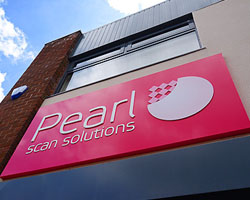When it comes to reducing paper consumption, there are a plethora of tips and tricks out there in order to help both individuals and businesses cut down on their paper consumption. But much of this advice is simply not feasible for businesses to follow day to day when they need to continue their daily functions – or indeed increase their output due to increasing customer demand.
Pearl Scan has been at the forefront of the paperless movement for many years. Their forward-thinking expertise has helped thousands of businesses – both small and large – cut down on their paper consumption. As a successful business that has been established for over a decade, the company has seen first-hand the change in thinking in the industry and what affect going paperless can have on businesses. With that in mind, the company is arguably best placed to offer tips to companies looking to cut down on paper consumption. So what are the pioneering company’s top tips for businesses looking to reduce waste and up their green credentials?
The golden rule for most is to ‘think before you print’. But this is a broad term that isn’t necessarily clear. When it comes to printing in the workplace, emails, documents and images are all commonplace, but making simple changes to this process can help to reduce the amount of paper used – almost by half.
“Emails are one of the most common documents to be printed in the workplace,” says Naveed Ashraf, Managing Director at Pearl Scan Group. “And although some emails do need to be printed for meetings and reference, the fact is when you click ‘print’, you usually end up with large signatures and replies that you simply do not need. Instead of printing the email off the bat, it’s worth copying and pasting the text you need to a document and simply printing it from there. This will usually cut your paper consumption down by at least half – every single time you print an email.”
 The amount of paper used to print text documents can also be reduced. Changing the text font to 9 or 10 point can cut down on paper significantly – particularly if it is a large document. Most programmes default to 11 or 12 point, so by reducing this by two or three points can really help to cut down on wastage. And this can be amplified further by setting printers to print both sides of the paper by default.
The amount of paper used to print text documents can also be reduced. Changing the text font to 9 or 10 point can cut down on paper significantly – particularly if it is a large document. Most programmes default to 11 or 12 point, so by reducing this by two or three points can really help to cut down on wastage. And this can be amplified further by setting printers to print both sides of the paper by default.
Should lots of documents need to be printed however, putting non-sensitive information into a scrap paper tray so that the reverse can be used for taking notes is also a good way to reduce wastage.
Naveed, adds, “The world uses 1 million tonnes of paper every single day. And it’s not unreasonable to say that much of that could be reduced by taking simple measures. It’s been said that reductions of at least 20% are possible in most offices, it’s just a case of changing the way you think and amending your practices slightly. And soon, it will become the norm.”
Taking leaps into the future and creating a fully paperless office is one of the best ways to reduce paper consumption and one many businesses have adopted as the world become more digitalised. Scanning existing documents and adopting digital principals, such as digital mailrooms and survey scanning can help to cut down on paper usage business-wide and streamline companies in order to make them more productive across the board.
To find out more about Pearl Scan, visit: https://www.pearl-scan.co.uk
Facebook: https://www.facebook.com/pages/Pearl-Scan-Solutions/208624582495681
About
Pearl Scan Solutions (Group) was founded in 2003 to support organisations facing document management issues and challenges in their desire to go paperless to become more efficient. Since then, they have grown into a leading national document scanning services provider that delivers the highest quality document scanning and data capture services, enabling clients to successfully unlock the value of the information contained in their files, resulting in increased productivity, performance, competitive advantages and in most cases significant reductions in cost.









